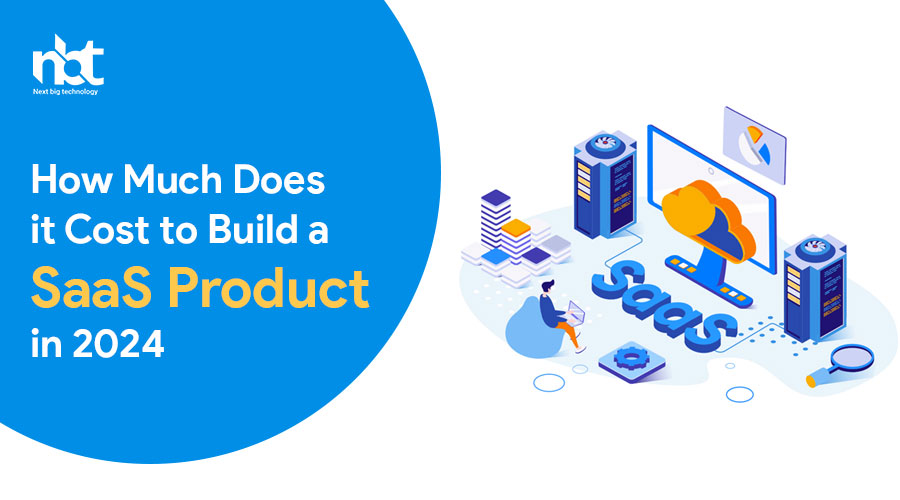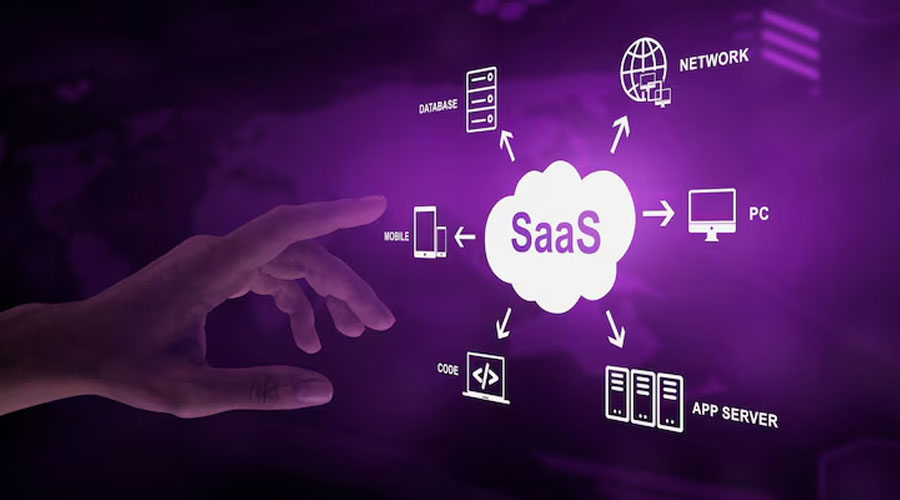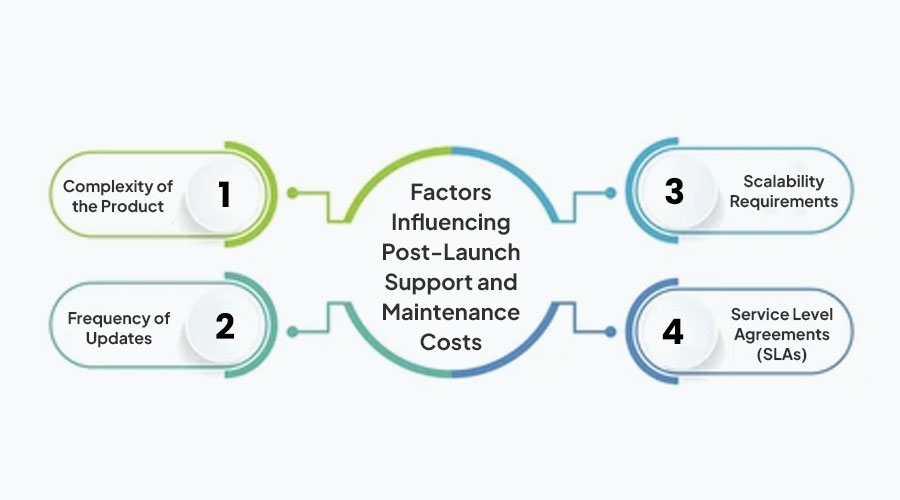Table of Contents
Introduction to SaaS Product Development Costs
In the rapidly evolving landscape of technology, Software as a Service (SaaS) has emerged as a game-changer for businesses worldwide. From startups to enterprises, the allure of SaaS lies in its scalability, flexibility, and cost-effectiveness. However, behind every successful SaaS product lies a meticulously planned development process, often accompanied by its share of costs. In this article, we delve into the intricacies of SaaS product development costs, shedding light on the essential components and factors that businesses need to consider.
Exploring the Fundamentals
Before delving into the nitty-gritty of SaaS product development costs, it’s crucial to grasp the fundamentals of what constitutes a SaaS product. Unlike traditional software solutions, SaaS products are hosted centrally and accessed by users over the internet, typically on a subscription basis. This architecture eliminates the need for users to install and maintain software locally, offering unparalleled convenience and accessibility.
Key Components of SaaS Product Development Costs
- Initial Development: The journey begins with conceptualization and development. This phase involves outlining the product’s features, designing the user interface (UI), architecting the system, and writing code. The complexity of the product and the expertise of the development team significantly influence the costs incurred during this stage.
- Infrastructure Costs: SaaS products rely on robust infrastructure to ensure reliability, scalability, and security. Cloud computing services such as Amazon Web Services (AWS), Microsoft Azure, or Google Cloud Platform (GCP) provide the necessary infrastructure. Costs associated with servers, databases, storage, and network resources contribute to infrastructure expenses.
- Maintenance and Updates: The development doesn’t end with the launch of the product. Continuous maintenance and updates are imperative to address bugs, enhance features, and adapt to evolving user needs. Businesses must allocate resources for ongoing maintenance to ensure the longevity and competitiveness of their SaaS offerings.
- Security Measures: With data breaches becoming increasingly prevalent, investing in robust security measures is non-negotiable for SaaS providers. Implementing encryption, authentication mechanisms, regular security audits, and compliance certifications incur additional costs but are essential for safeguarding sensitive user data.
- Customer Support and Training: Excellent customer support is the cornerstone of customer satisfaction and retention in the SaaS industry. Allocating resources for a dedicated support team, knowledge base creation, and user training programs adds to the overall cost but pays dividends in terms of customer loyalty and positive word-of-mouth.
Factors Influencing SaaS Product Development Costs
- Scope and Complexity: The breadth and complexity of features significantly impact development costs. A simple SaaS solution with basic functionalities will incur fewer expenses compared to a feature-rich, enterprise-grade application catering to diverse user needs.
- Technology Stack: The choice of technology stack, including programming languages, frameworks, and third-party integrations, influences development costs. Opting for cutting-edge technologies or niche solutions may entail higher upfront costs but can enhance performance and scalability in the long run.
- Team Composition and Expertise: The composition of the development team, including developers, designers, QA engineers, and project managers, influences costs. Hiring experienced professionals or outsourcing development to specialized agencies may incur higher expenses but ensures quality and efficiency.
- Time to Market: Accelerating the development process to seize market opportunities may necessitate additional resources and incur higher costs. Balancing speed and quality is essential to minimize costs while meeting market demands effectively.
Factors Influencing SaaS Product Development Expenses
In the ever-evolving realm of technology, Software as a Service (SaaS) has emerged as a dominant model for delivering software applications over the internet. SaaS products offer convenience, scalability, and cost-effectiveness, making them an attractive option for businesses of all sizes. However, developing a successful SaaS product requires careful planning and investment. Understanding the factors that influence SaaS product development expenses is crucial for businesses aiming to navigate this competitive landscape efficiently.
- Scope and Complexity of the Product: The scope and complexity of a SaaS product play a significant role in determining its development expenses. Products with advanced features, intricate functionalities, and sophisticated integrations typically require more time and resources to develop. As the complexity increases, so does the cost associated with development efforts.
- Technology Stack: The choice of technology stack can have a substantial impact on development costs. Opting for cutting-edge technologies or specialized frameworks may result in higher expenses due to licensing fees, developer expertise, and maintenance requirements. Conversely, using open-source technologies or leveraging existing libraries and frameworks can help mitigate costs without compromising quality.
- Development Team Composition: The composition of the development team directly influences expenses. Hiring skilled developers, designers, project managers, and quality assurance professionals demands financial investment. Additionally, factors such as team size, experience level, and geographical location can affect overall development costs. Outsourcing certain aspects of development to offshore teams may offer cost savings but could introduce communication challenges and quality control issues.
- Customization and Personalization Requirements: Tailoring a SaaS product to meet specific customer needs often involves customization and personalization efforts. While customization can enhance the product’s value proposition, it also entails additional development expenses. Balancing customization requirements with budgetary constraints is essential to ensure a satisfactory return on investment (ROI).
- Integration with Third-party Services: Many SaaS products rely on integration with third-party services or APIs to extend functionality and provide seamless user experiences. However, integrating external services can introduce complexities and increase development costs. Evaluating the necessity of integrations and prioritizing them based on their impact on user experience and business objectives is essential for cost-effective development.
- Security and Compliance Standards: Ensuring the security and compliance of a SaaS product is paramount, particularly in industries such as healthcare, finance, and e-commerce. Implementing robust security measures and adhering to regulatory requirements may require significant investment in terms of development time, expertise, and infrastructure. Ignoring security and compliance considerations can result in costly breaches, legal penalties, and damage to reputation.
- Scalability and Performance Requirements: Building a scalable and high-performance SaaS product is essential for accommodating growth and delivering optimal user experiences. Investing in scalable architecture, load testing, and performance optimization early in the development process can help mitigate future scalability challenges and minimize the need for costly rework.
- User Experience (UX) Design: A seamless and intuitive user experience is critical for the success of any SaaS product. Investing in UX design and usability testing can enhance user satisfaction, drive adoption rates, and reduce support costs. However, comprehensive UX design efforts may require additional resources and expertise, impacting development expenses.
Budgeting for Development: Key Considerations
In the realm of development initiatives, effective budgeting plays a pivotal role in ensuring the success and sustainability of projects. Whether it’s a community-based endeavor, a business expansion plan, or a non-profit undertaking, allocating resources wisely is crucial for achieving desired outcomes. However, budgeting for development comes with its own set of challenges and considerations that demand careful attention and strategic planning. In this article, we delve into the key factors to consider when crafting budgets for development projects.
- Clearly Defined Goals and Objectives: Before diving into budget planning, it’s imperative to have a clear understanding of the project’s goals and objectives. What are you aiming to achieve through this development endeavor? Defining specific, measurable, achievable, relevant, and time-bound (SMART) objectives will not only guide your budget allocation but also help in evaluating the project’s success down the line.
- Thorough Needs Assessment: Conducting a comprehensive needs assessment is fundamental to identify the resources required to meet the project’s objectives. This involves analyzing the current situation, understanding the target audience or beneficiaries, and determining the specific needs and challenges that need to be addressed. Whether it’s human resources, equipment, infrastructure, or other essentials, a thorough needs assessment forms the basis of accurate budget estimation.
- Stakeholder Involvement and Collaboration: Engaging stakeholders throughout the budgeting process is vital for ensuring inclusivity and buy-in. From community members to investors, involving relevant stakeholders provides valuable insights, fosters collaboration, and enhances the overall effectiveness of budget decisions. By considering diverse perspectives and priorities, you can create a budget that reflects the needs and aspirations of all involved parties.
- Risk Assessment and Contingency Planning: Development projects often face uncertainties and unforeseen challenges that can impact budgetary requirements. Conducting a rigorous risk assessment helps in identifying potential threats and vulnerabilities, allowing you to integrate risk mitigation strategies into the budgeting process. Allocating a portion of the budget for contingencies ensures flexibility and resilience in the face of unexpected circumstances, safeguarding the project’s progress.
- Monitoring and Evaluation Mechanisms: Effective budgeting extends beyond the initial allocation of resources; it involves continuous monitoring and evaluation to track expenditure, measure progress, and identify areas for improvement. Implementing robust monitoring and evaluation mechanisms enables you to assess the efficiency and impact of budget utilization, facilitating informed decision-making and adjustments as needed to optimize resource allocation.
- Sustainability and Long-Term Planning: Sustainable development entails not only meeting immediate needs but also ensuring the long-term viability and resilience of initiatives. When budgeting for development projects, it’s essential to consider the sustainability of interventions beyond the project lifespan. This may involve investing in capacity building, promoting local ownership, and integrating environmentally friendly practices to ensure lasting impact and legacy.
- Transparency and Accountability: Transparency and accountability are foundational principles in budgeting for development. Maintaining transparency in financial processes, decision-making, and resource allocation builds trust among stakeholders and fosters accountability for achieving desired outcomes. Documenting budgetary decisions, communicating financial information openly, and establishing clear mechanisms for reporting and oversight are essential for promoting transparency and accountability.
Cost Breakdown: Development Phase
In the realm of project development, understanding cost breakdown during the development phase is paramount for effective budget management and project success. Whether you’re embarking on a software development endeavor, constructing a building, or launching a new product, breaking down costs helps in allocating resources efficiently and mitigating financial risks. Let’s delve into the intricacies of cost breakdown during the development phase and explore its significance.
- Planning and Analysis: The initial stage of any project involves meticulous planning and analysis. This phase encompasses defining project scope, objectives, and requirements. It also involves conducting market research and feasibility studies. While this phase may seem intangible, it incurs costs associated with labor, consultations, and research materials.
- Design and Prototyping: Following the planning phase, designers and engineers translate concepts into tangible designs and prototypes. This involves creating blueprints, wireframes, and mock-ups to visualize the end product. Costs in this phase primarily revolve around design software, labor costs for designers, and materials for prototyping.
- Development and Coding: The core phase where ideas begin to materialize into functional products. Developers and programmers write code, integrate features, and ensure the product meets quality standards. Costs in this phase are predominantly associated with human resources, software licenses, and infrastructure such as servers or development tools.
- Testing and Quality Assurance: Before deployment, rigorous testing and quality assurance procedures are essential to identify and rectify any defects or issues. This phase incurs costs related to testing tools, QA specialists, and additional development time for bug fixes and improvements.
- Deployment and Implementation: Once the product passes testing, it’s ready for deployment. This involves setting up infrastructure, migrating data, and ensuring a seamless transition from development to production environments. Costs may include deployment tools, server hosting fees, and labor for implementation.
- Training and Support: Post-deployment, providing training and ongoing support is crucial for user adoption and satisfaction. Costs in this phase involve developing training materials, conducting training sessions, and maintaining customer support channels.
- Maintenance and Updates: Even after deployment, the journey doesn’t end. Products require regular maintenance, updates, and enhancements to adapt to evolving user needs and technological advancements. Costs may vary depending on the frequency and complexity of updates required.
Understanding the breakdown of costs during the development phase empowers project managers to make informed decisions, allocate resources effectively, and ensure projects stay within budget constraints. It also enables stakeholders to evaluate the return on investment (ROI) and assess the feasibility of the project.
Investing in Infrastructure and Technology
In today’s fast-paced world, the intersection of infrastructure and technology presents an unparalleled opportunity for investors seeking sustainable growth and long-term returns. As the backbone of economic development, infrastructure lays the groundwork for societal advancement, while technology serves as the catalyst for innovation and efficiency. Combining these two forces not only enhances connectivity and accessibility but also drives productivity and competitiveness on a global scale.
Investing in infrastructure involves allocating capital towards the construction, maintenance, and improvement of essential physical assets such as roads, bridges, airports, railways, and utilities. These investments not only facilitate the movement of goods and people but also create jobs, stimulate economic activity, and enhance overall quality of life. Moreover, modernizing existing infrastructure and developing new systems aligned with sustainable practices can contribute to environmental conservation and resilience against climate change.
On the other hand, technology plays a pivotal role in shaping the future landscape of infrastructure. Advancements in digitalization, automation, artificial intelligence, and the Internet of Things (IoT) are revolutionizing how infrastructure operates and interacts with its environment. Smart infrastructure solutions offer real-time data analytics, predictive maintenance, and optimization algorithms, enabling more efficient resource utilization, reduced downtime, and enhanced safety across various sectors.
Investors keen on tapping into the potential of infrastructure and technology should consider several key factors to maximize their returns:
- Identify Growth Areas: Analyze market trends and government initiatives to identify sectors with significant growth potential, such as renewable energy, telecommunications, transportation, and sustainable urban development.
- Evaluate Risk and Reward: Assess the political, regulatory, and financial risks associated with infrastructure projects, as well as the potential returns over the investment horizon. Diversification across different projects and regions can mitigate risks and enhance portfolio resilience.
- Embrace Innovation: Emphasize investments in technology-driven solutions that enhance the efficiency, sustainability, and resilience of infrastructure assets. Collaborate with startups, research institutions, and technology providers to stay at the forefront of innovation.
- Long-Term Perspective: Adopt a long-term investment horizon aligned with the lifecycle of infrastructure assets, which often span several decades. Patient capital is crucial for navigating through project development, construction, and operational phases, as well as adapting to evolving market dynamics.
- Sustainable Practices: Prioritize investments in infrastructure projects that adhere to environmental, social, and governance (ESG) principles. Sustainability considerations not only mitigate risks associated with climate change and resource scarcity but also unlock opportunities for green financing and regulatory incentives.
- Partnerships and Collaboration: Explore strategic partnerships with governments, multilateral institutions, and other investors to leverage expertise, share resources, and co-invest in large-scale infrastructure projects. Collaborative approaches can accelerate project delivery, mitigate risks, and enhance overall project viability.
- Monitor and Adapt: Continuously monitor the performance of infrastructure investments and adjust strategies based on evolving market conditions, technological advancements, and regulatory changes. Flexibility and agility are essential for navigating through uncertainties and seizing emerging opportunities.
Software Licensing and Subscription Costs
In today’s digital age, software has become an integral part of both personal and professional lives. Whether it’s for business operations, creative endeavors, or simple daily tasks, accessing the right software is crucial. However, with the plethora of options available in the market, understanding software licensing and subscription costs can be a daunting task. In this guide, we’ll delve into the intricacies of software licensing models and subscription costs to help you make informed decisions.
Software Licensing Models:
- Perpetual Licensing: Perpetual licensing involves a one-time payment for the software, granting the user the right to use the software indefinitely. This model was predominant in the past, where users paid upfront for a lifetime license. However, with evolving technology and changing consumer preferences, perpetual licensing is becoming less common.
- Subscription Licensing: Subscription licensing, also known as Software as a Service (SaaS), has gained popularity in recent years. Instead of a one-time payment, users pay a recurring fee at regular intervals, typically monthly or annually, to access the software. This model offers flexibility, scalability, and often includes regular updates and support.
- Freemium Model: The freemium model provides basic features of the software for free, while advanced features are offered under a paid subscription. It allows users to try out the software before committing to a subscription, making it a popular choice for startups and small businesses.
- Usage-Based Licensing: In this model, users are charged based on their usage of the software, such as the number of active users or the volume of data processed. It offers a pay-as-you-go approach, suitable for businesses with fluctuating usage patterns.
Factors Affecting Subscription Costs:
- Features and Functionality: The subscription cost often correlates with the features and functionalities offered by the software. Advanced features or specialized tools may come at a higher price point.
- User Access and Scalability: Subscription costs may vary based on the number of users allowed to access the software. Additionally, scalability options, such as the ability to add or remove users as needed, can impact the subscription price.
- Support and Maintenance: Many subscription plans include support services and regular software updates. The level of support and maintenance provided can influence the overall subscription cost.
- Customization and Integration: Software that offers customization options or seamless integration with other applications may come with a higher subscription cost. However, these features can enhance productivity and efficiency, making them worth the investment for many businesses.
Tips for Managing Software Costs:
- Evaluate Your Needs: Before subscribing to a software service, assess your requirements carefully. Determine which features are essential for your business operations and prioritize them accordingly.
- Compare Pricing Plans: Take the time to compare pricing plans from different software vendors. Look for transparent pricing structures and consider factors such as contract terms, discounts for annual payments, and hidden fees.
- Negotiate with Vendors: Don’t hesitate to negotiate with software vendors, especially if you’re committing to a long-term subscription. Many vendors are willing to offer discounts or custom packages to accommodate your needs.
- Monitor Usage and Costs: Regularly review your software usage and subscription costs to identify any inefficiencies or areas for optimization. Adjust your subscription plans as needed to align with your evolving business requirements.
Testing and Quality Assurance Expenditures
In the ever-evolving landscape of software development, ensuring the quality and reliability of products is paramount. As businesses strive to meet the demands of an increasingly discerning market, allocating resources effectively becomes a strategic imperative. One area that demands attention is testing and quality assurance expenditures. Understanding how to optimize investments in this realm can yield significant returns in terms of customer satisfaction, brand reputation, and overall profitability.
Testing and quality assurance (QA) expenditures encompass a wide range of activities aimed at identifying defects, validating functionality, and ensuring that software meets predefined quality standards. From manual testing to automated processes, the methodologies employed can vary depending on the nature of the project, the industry, and the specific requirements.
Investing in testing and QA is not merely a cost; it is an investment in the future success of the product and the business as a whole. Here’s why:
- Enhanced Customer Satisfaction: Quality assurance ensures that the software performs as expected, minimizing the likelihood of bugs and glitches that can frustrate users. By investing in robust testing processes, businesses can deliver a seamless user experience, leading to higher levels of satisfaction and loyalty.
- Protecting Brand Reputation: In today’s hyper-connected world, a single software malfunction can quickly escalate into a PR nightmare, tarnishing the brand’s reputation. By prioritizing quality assurance, companies demonstrate their commitment to reliability and professionalism, thereby safeguarding their brand image.
- Cost Savings in the Long Run: While it may seem counterintuitive, investing in testing and QA can actually save money over time. Detecting and fixing defects early in the development cycle is far less expensive than addressing them post-release. By catching issues early, businesses can avoid costly rework, potential legal liabilities, and lost revenue due to downtime.
- Competitive Advantage: In a crowded marketplace, quality becomes a key differentiator. Businesses that prioritize testing and QA can differentiate themselves by offering products that are more stable, secure, and feature-rich than those of their competitors. This can translate into a significant competitive advantage, driving customer acquisition and retention.
- Regulatory Compliance: For industries such as healthcare, finance, and aerospace, regulatory compliance is non-negotiable. Quality assurance processes help ensure that software meets the stringent standards set forth by regulatory bodies, thereby mitigating the risk of fines, legal penalties, and reputational damage.
Despite the compelling benefits, many businesses struggle to strike the right balance when it comes to testing and QA expenditures. Overspending can strain budgets and impede profitability, while underspending can result in subpar products that fail to meet customer expectations.
To optimize investments in testing and QA, businesses should adopt a strategic approach:
- Prioritize Testing Efforts: Not all features are created equal. Prioritize testing efforts based on the criticality of features, potential impact on users, and likelihood of failure. Focus resources where they will have the greatest impact.
- Embrace Automation: Manual testing can be time-consuming and error-prone. Embrace automation wherever possible to streamline testing processes, accelerate feedback loops, and improve overall efficiency.
- Continuous Improvement: Testing and QA should be viewed as iterative processes rather than one-time activities. Continuously evaluate and refine testing strategies based on feedback, performance metrics, and emerging technologies.
- Collaboration and Communication: Foster collaboration between development, testing, and QA teams to ensure alignment of goals, priorities, and expectations. Clear communication channels are essential for identifying issues early and implementing timely resolutions.
User Experience (UX) and Interface Design Costs
In today’s digital landscape, crafting an exceptional user experience (UX) and interface design is paramount for the success of any website or application. However, achieving such excellence often comes with a price tag attached. Understanding the costs associated with UX and interface design is crucial for businesses looking to invest wisely in their digital presence.
User experience encompasses the overall journey of a user as they interact with a product or service. It involves aspects such as usability, accessibility, and satisfaction. On the other hand, interface design focuses on the visual elements and interactive features that facilitate this user experience. Together, they play a vital role in shaping how users perceive and engage with a digital product.
So, what factors contribute to the costs of UX and interface design?
- Research and Analysis: The foundation of any successful UX design project lies in thorough research and analysis. This phase involves understanding the target audience, their needs, behaviors, and pain points. Conducting user interviews, surveys, and competitor analysis are common practices in this stage. The cost varies depending on the depth and extent of research required.
- Wireframing and Prototyping: Once the research is complete, designers create wireframes and prototypes to visualize the structure and functionality of the product. Wireframes serve as blueprints outlining the layout and navigation, while prototypes provide interactive simulations of the final product. This iterative process allows for refining and validating design concepts before moving into development.
- Visual Design: Visual design focuses on the aesthetics of the interface, including colors, typography, imagery, and branding elements. Designers work to create visually appealing interfaces that align with the brand identity while enhancing usability and accessibility. The complexity of the design and the level of customization required influence the cost of this phase.
- Usability Testing: Usability testing involves evaluating the effectiveness and efficiency of the design through real user interactions. Feedback gathered from usability tests helps identify areas for improvement and refinement. Investing in usability testing ensures that the final product meets user expectations and minimizes the need for costly redesigns post-launch.
- Development and Implementation: Once the design is finalized, developers translate the visual and functional elements into code. The cost of development depends on factors such as the complexity of features, platform compatibility, and integration with existing systems. Collaboration between designers and developers is crucial to ensure seamless implementation of the design vision.
- Maintenance and Iteration: The journey doesn’t end with the launch of the product. Ongoing maintenance and iteration are essential to keep the design relevant and competitive. This includes monitoring user feedback, analyzing metrics, and making iterative improvements based on evolving user needs and technological advancements.
While investing in UX and interface design may seem daunting, the long-term benefits far outweigh the initial costs. A well-designed user experience not only enhances customer satisfaction and loyalty but also drives business growth and competitive advantage.
Post-Launch Support and Maintenance Costs
In the realm of product development, the journey doesn’t end with the launch. In fact, it’s just the beginning. Post-launch support and maintenance play a pivotal role in ensuring the longevity and success of any product. However, these aspects often come with associated costs that need careful consideration. In this article, we’ll delve into the intricacies of post-launch support and maintenance costs, exploring why they are crucial and how businesses can effectively manage them.
The Importance of Post-Launch Support and Maintenance:
Once a product is launched, it enters the phase where it is being actively used by customers. During this time, issues may arise, bugs may surface, and enhancements may be required to keep the product relevant and competitive in the market. Post-launch support and maintenance serve as the backbone of customer satisfaction and retention. Prompt resolution of issues, regular updates, and continuous improvement contribute to building trust and loyalty among users.
Factors Influencing Post-Launch Support and Maintenance Costs:
- Complexity of the Product: The more intricate the product, the higher the likelihood of encountering issues post-launch. Complex systems require specialized expertise to maintain, which can escalate costs.
- Frequency of Updates: Technology is constantly evolving, and so are customer expectations. Regular updates are essential to address security vulnerabilities, add new features, and enhance user experience. However, frequent updates incur additional costs in terms of development and testing.
- Scalability Requirements: As the user base grows, so do the demands on the product infrastructure. Scalability considerations must be factored into post-launch support and maintenance to ensure seamless performance under increased loads.
- Service Level Agreements (SLAs): SLAs define the level of support and response times expected from the service provider. Meeting stringent SLAs may necessitate dedicated resources and infrastructure, impacting overall costs.
Effective Strategies for Managing Post-Launch Support and Maintenance Costs:
- Proactive Monitoring and Maintenance: Implementing robust monitoring tools allows for early detection of issues, reducing the likelihood of major disruptions and associated costs. Proactive maintenance helps in identifying potential bottlenecks and optimizing performance.
- Prioritization of Tasks: Not all issues are of equal importance. Prioritizing tasks based on their impact on the user experience and business objectives ensures that resources are allocated judiciously, minimizing unnecessary expenses.
- Automation and Standardization: Leveraging automation tools for repetitive tasks and standardizing processes can streamline support and maintenance activities, improving efficiency and reducing manual effort.
- Continuous Training and Skill Development: Investing in the professional development of support and maintenance teams equips them with the knowledge and expertise needed to tackle complex issues effectively, reducing reliance on external assistance and associated costs.
Top SaaS Product Development Companies
In the rapidly evolving landscape of technology, Software as a Service (SaaS) has emerged as a game-changer, revolutionizing how businesses operate and deliver value to their customers. With the demand for efficient and scalable solutions skyrocketing, the role of SaaS product development companies has become more crucial than ever. These companies serve as the architects behind the scenes, crafting innovative solutions that empower organizations to streamline operations, enhance productivity, and drive growth. Here, we delve into the realm of top-tier SaaS product development companies, leading the charge in innovation and excellence.
-
-
Next Big Technology:

Focus Area
- Mobile App Development
- App Designing (UI/UX)
- Software Development
- Web Development
- AR & VR Development
- Big Data & BI
- Cloud Computing Services
- DevOps
- E-commerce Development
Industries Focus
- Art, Entertainment & Music
- Business Services
- Consumer Products
- Designing
- Education
- Financial & Payments
- Gaming
- Government
- Healthcare & Medical
- Hospitality
- Information Technology
- Legal & Compliance
- Manufacturing
- Media
-
- Salesforce: A household name in the realm of Customer Relationship Management (CRM), Salesforce has redefined how businesses manage their interactions with customers and prospects. Leveraging the power of cloud computing, Salesforce offers a comprehensive suite of SaaS solutions tailored to various industries and business needs. From Sales Cloud to Service Cloud and beyond, Salesforce continues to innovate and shape the future of CRM.
- Zendesk: Specializing in customer service and engagement solutions, Zendesk has established itself as a frontrunner in the SaaS arena. Its intuitive platform enables businesses to deliver personalized support experiences across multiple channels, fostering stronger customer relationships and driving loyalty. With a focus on simplicity and scalability, Zendesk empowers organizations of all sizes to elevate their customer service game.
- HubSpot: As a leading provider of inbound marketing and sales software, HubSpot empowers businesses to attract, engage, and delight customers at every stage of the buyer’s journey. From marketing automation to CRM and beyond, HubSpot’s comprehensive suite of SaaS solutions equips organizations with the tools they need to grow better. With a strong emphasis on user experience and innovation, HubSpot continues to set the bar high in the digital marketing landscape.
- Twilio: Recognized for its cloud communications platform, Twilio enables developers to build, scale, and operate real-time communications applications with ease. Whether it’s voice, messaging, or video, Twilio’s APIs empower businesses to connect with their customers in meaningful ways, driving engagement and satisfaction. With a focus on developer experience and flexibility, Twilio remains a top choice for companies seeking to enhance their communication capabilities.
FAQs On SaaS Product Development
Are you considering venturing into the realm of Software as a Service (SaaS) product development? Perhaps you’re already knee-deep in the process and seeking clarity on various aspects. Regardless of where you stand, navigating the intricacies of SaaS product development can be daunting. But fear not! In this article, we’ll address some of the most frequently asked questions (FAQs) to shed light on this dynamic domain.
- What exactly is SaaS product development? SaaS product development involves creating software applications that are hosted on a remote server and accessed by users over the internet. Unlike traditional software, SaaS products are subscription-based, allowing users to access the services on a pay-as-you-go basis.
- How does SaaS product development differ from traditional software development? Unlike traditional software development, SaaS product development requires a strong focus on scalability, multi-tenancy, and security. Additionally, continuous updates and feature enhancements are integral to SaaS products to meet evolving user needs.
- What are the key stages of SaaS product development? The key stages of SaaS product development typically include ideation, market research, prototyping, development, testing, deployment, and ongoing maintenance. Each stage is crucial for ensuring the success and sustainability of the SaaS product.
- How important is market research in SaaS product development? Market research is paramount in SaaS product development as it helps identify target demographics, understand user pain points, and gauge market demand. By gathering insights early on, SaaS companies can tailor their products to meet specific user needs effectively.
- What technologies are commonly used in SaaS product development? Common technologies used in SaaS product development include cloud computing platforms (such as AWS, Azure, and Google Cloud), programming languages (such as Python, JavaScript, and Ruby), and frameworks (such as React, Angular, and Vue.js).
- How can I ensure the security of my SaaS product? Ensuring the security of a SaaS product involves implementing robust authentication mechanisms, data encryption, regular security audits, and compliance with industry standards such as GDPR and HIPAA. Additionally, educating users about best security practices is crucial.
- What are the monetization strategies for SaaS products? Monetization strategies for SaaS products vary depending on factors such as target market, pricing model, and value proposition. Common monetization models include subscription-based pricing, freemium models, tiered pricing, and usage-based pricing.
- How do I handle customer support and feedback in SaaS product development? Providing excellent customer support and actively seeking feedback are essential components of SaaS product development. Utilizing helpdesk software, establishing community forums, and conducting regular user surveys are effective ways to gather feedback and address customer concerns promptly.
- What are some common pitfalls to avoid in SaaS product development? Common pitfalls in SaaS product development include neglecting market validation, overcomplicating the user interface, underestimating infrastructure scalability, and failing to prioritize security. It’s crucial to learn from these mistakes and iterate continuously to improve the product.
- How do I stay updated with the latest trends in SaaS product development? Staying updated with the latest trends in SaaS product development involves actively participating in industry events, networking with peers, following influential thought leaders, and leveraging online resources such as blogs, forums, and podcasts.
Thanks for reading our post “How Much Does it Cost to Build a SaaS Product in 2024”. Please connect with us to learn more about Best Top SaaS Product.























